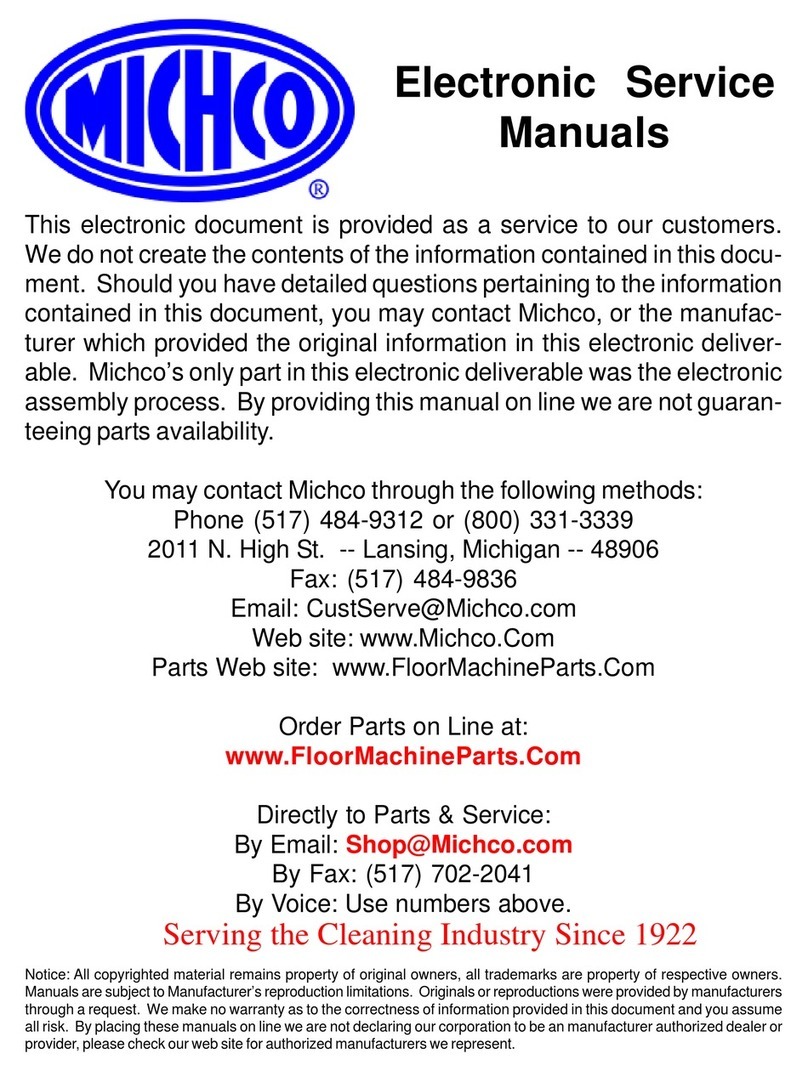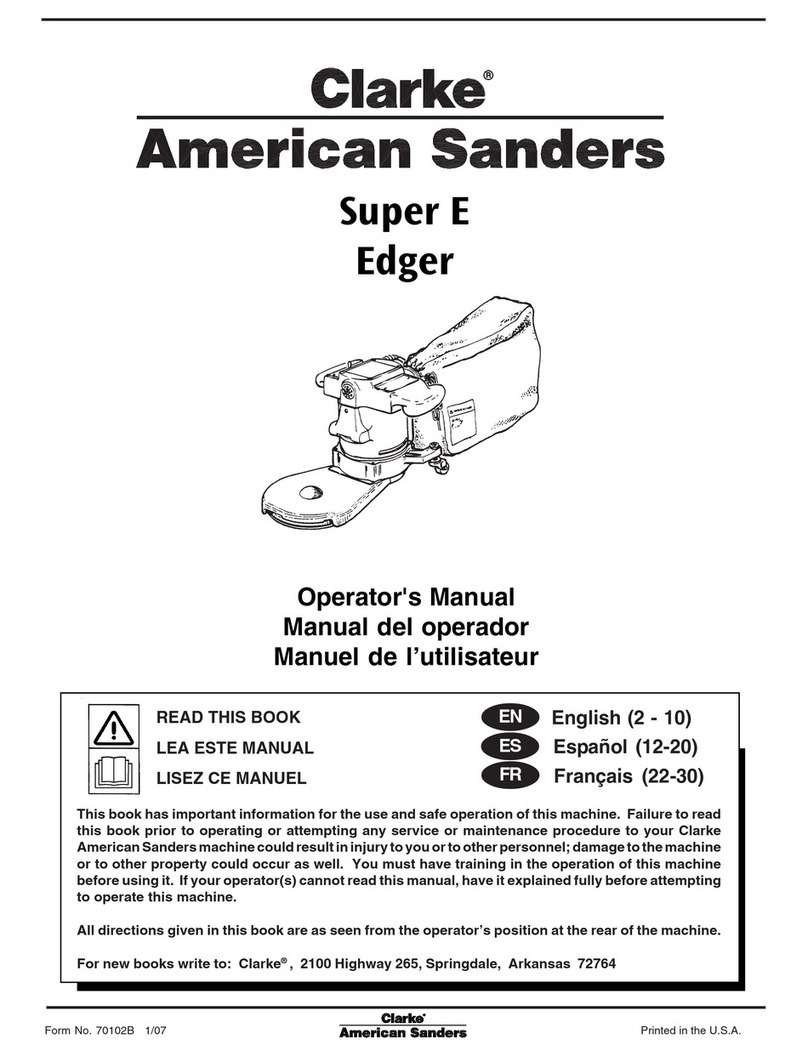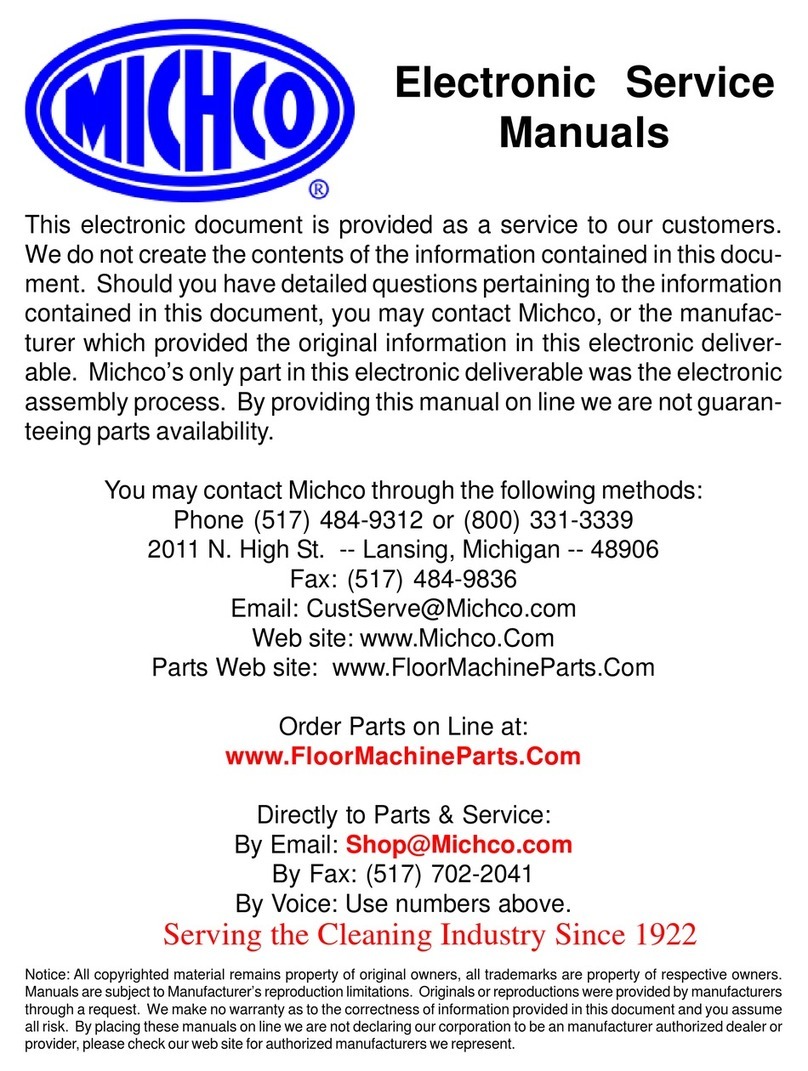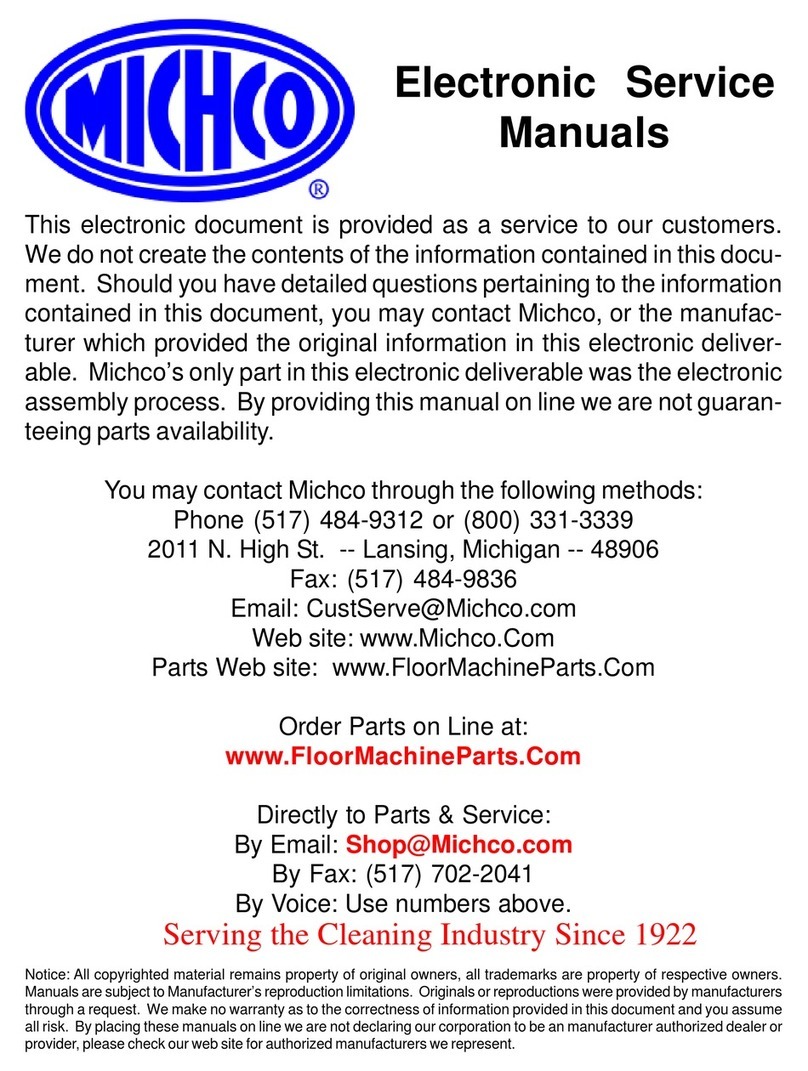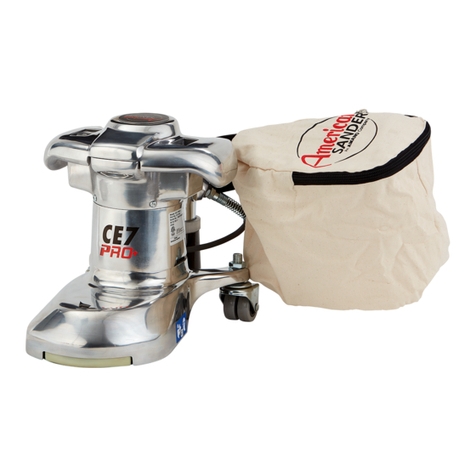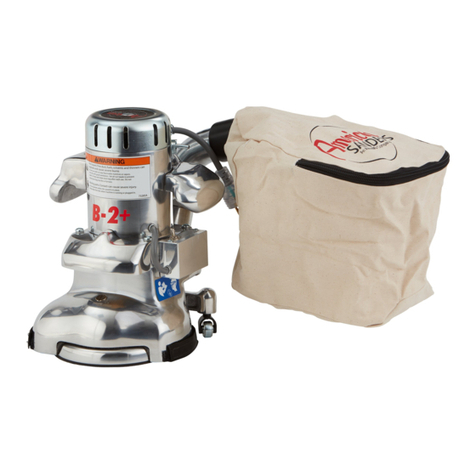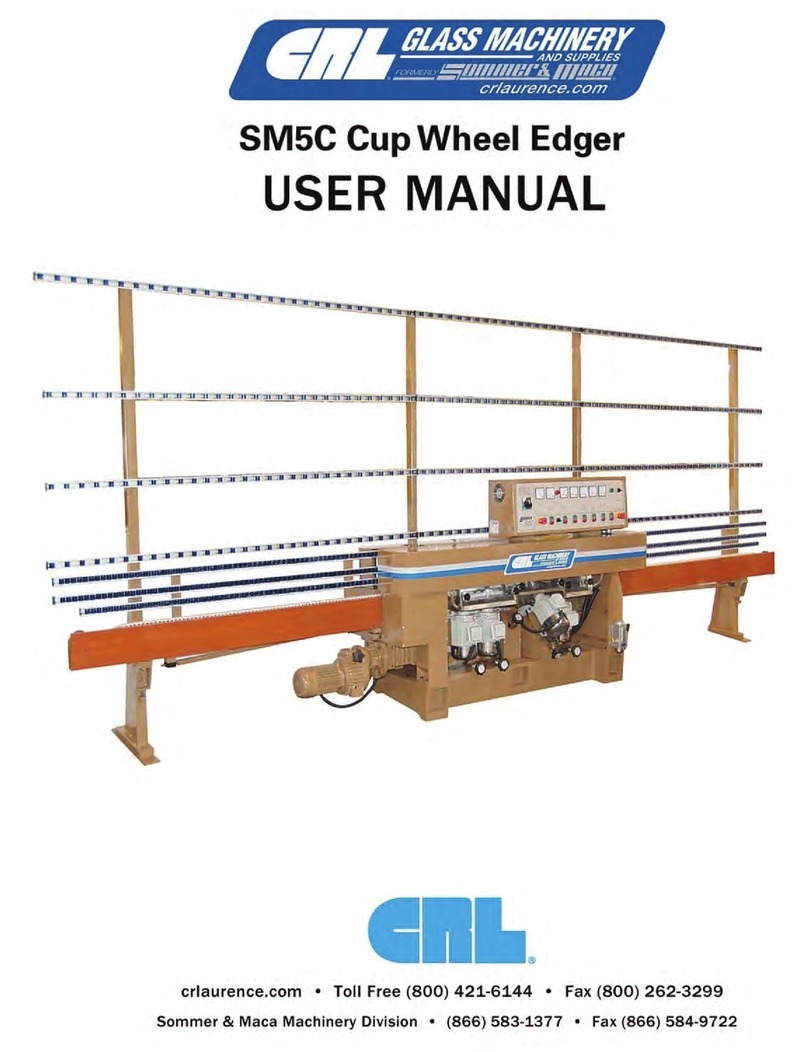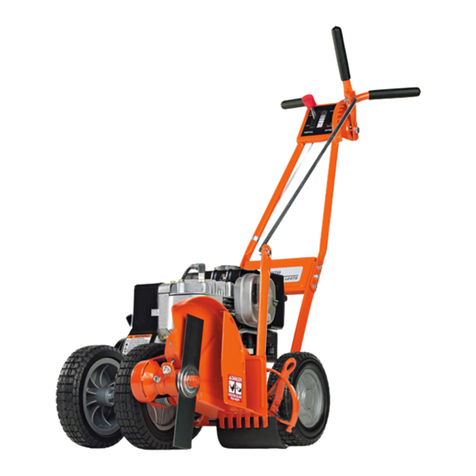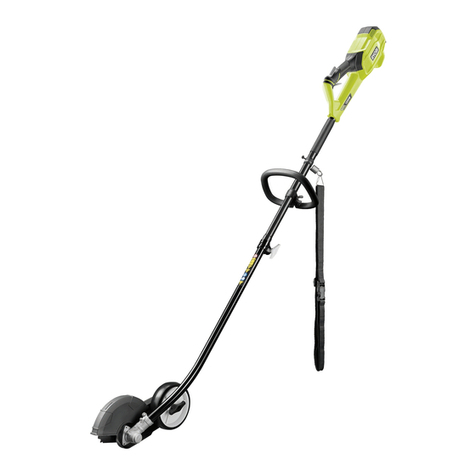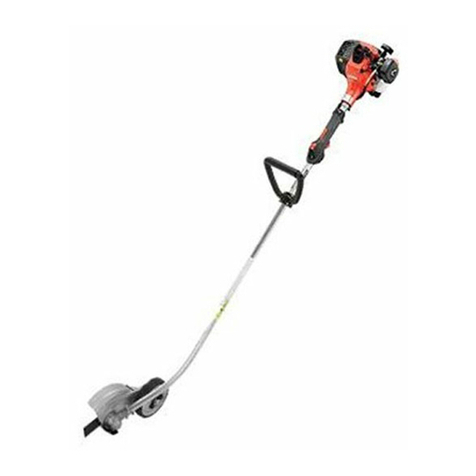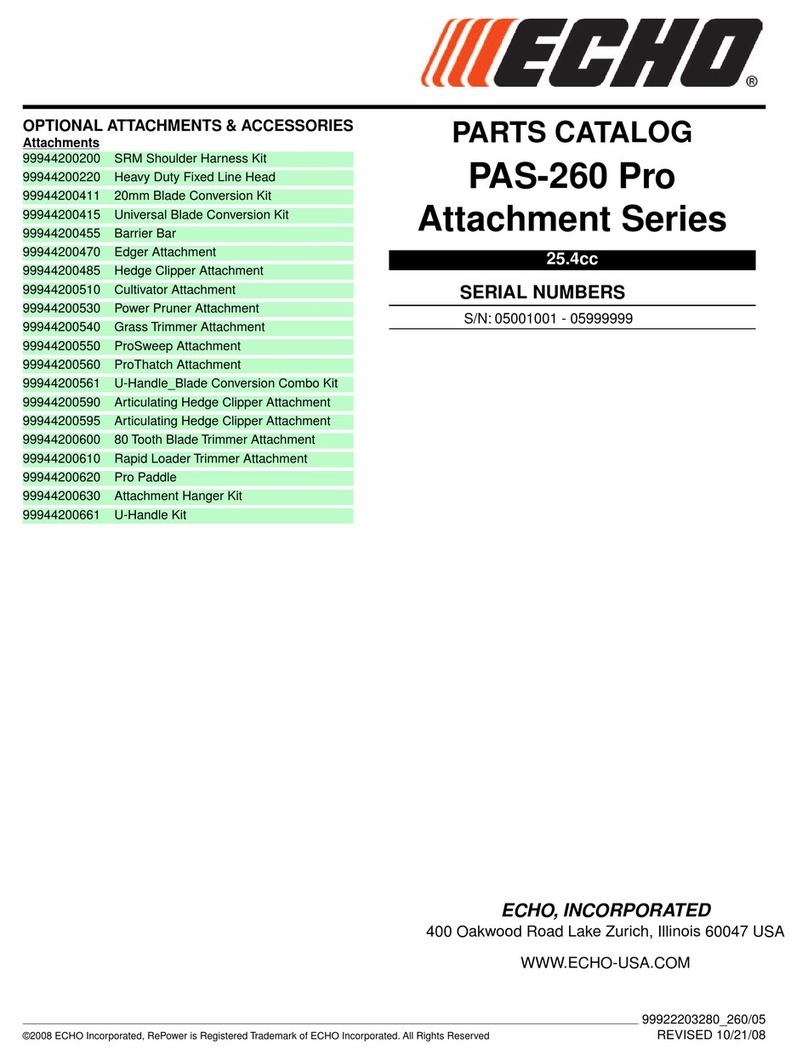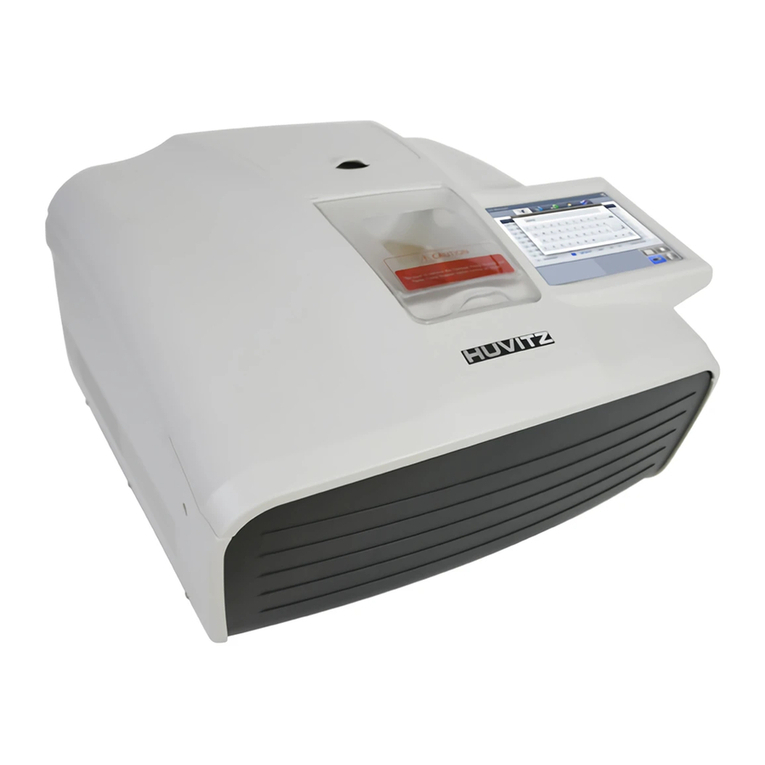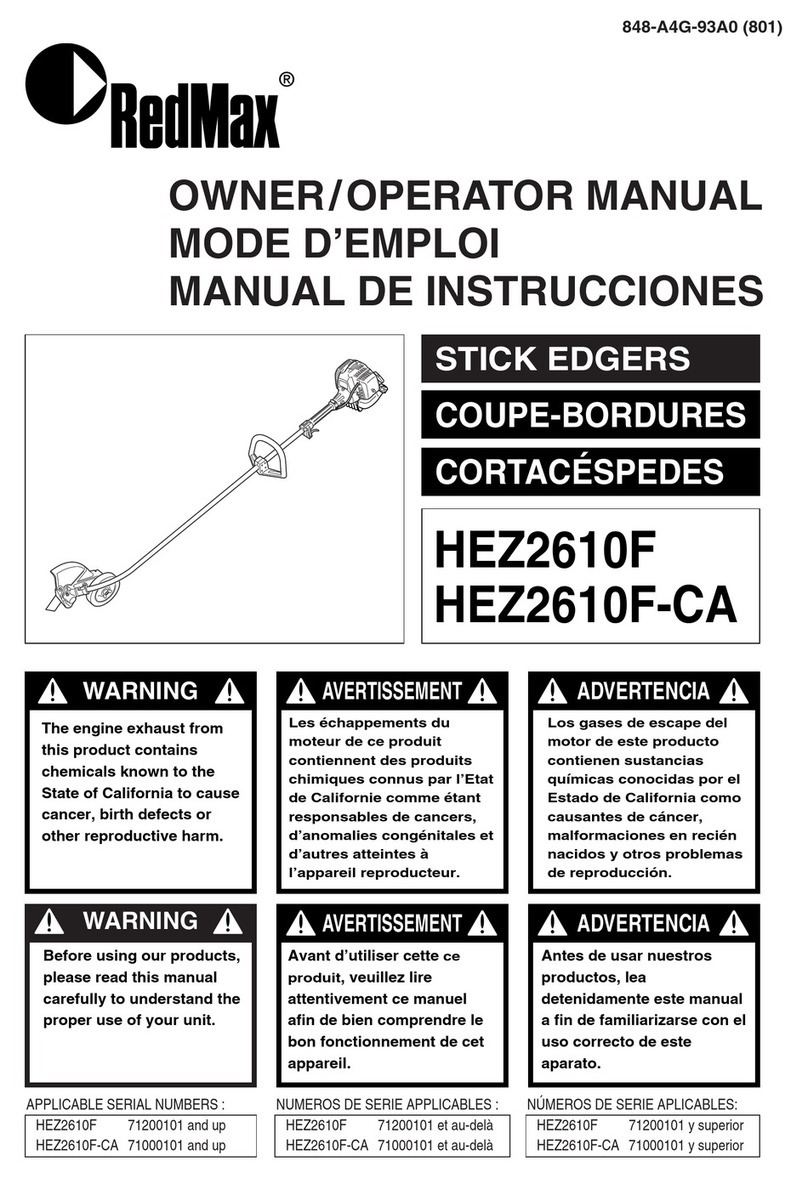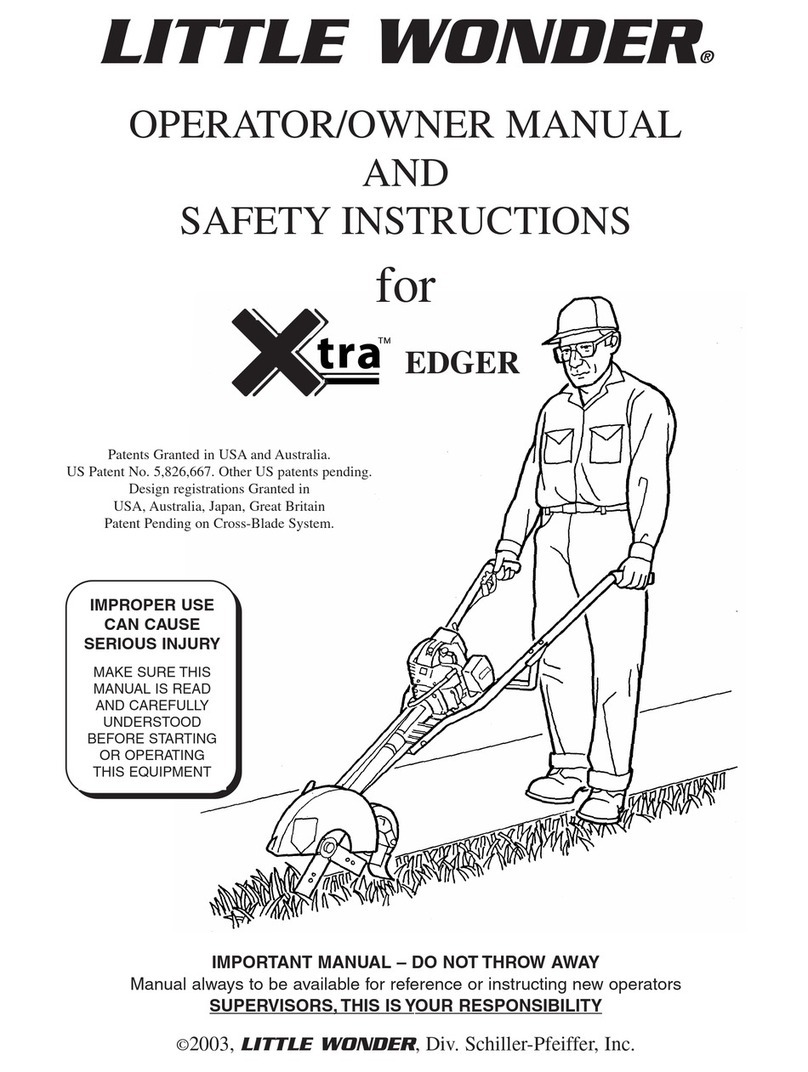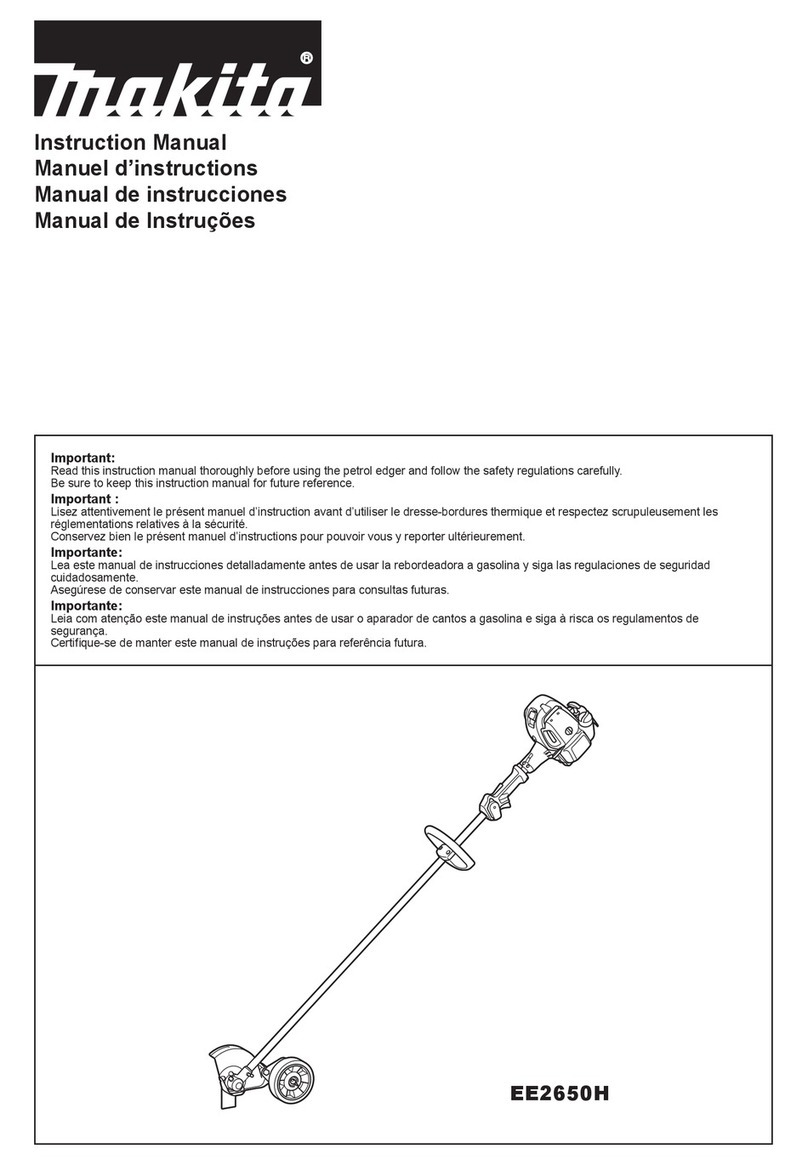
EN
ENGLISH
Clarke®American Sanders Operator's Manual (EN) - American B2 FORM NO. 70896A - 5 -
INTRODUCTION AND MACHINE SPECIFICATIONS
The American B-2 is specifically designed for finishing floor edges, stairs, and other hard-to-reach surfaces. The handle location and low center of
gravity make the American B-2 easy to operate.
The excellent cutting power comes from a powerful universal type motor. A motor that delivers maximum performance without slowing down or
overheating. Its exclusive two speed control when switched to hi-speed produces 3200 rpm for fast, rough sanding. At low speed, the American
B-2 operates at 2800 rpm for fine, finish sanding. A non-marking disc guard protects the rubber pad, permitting the edger to work right up to the
baseboard or wall.
Also standard is a convenient built-in headlight. Powerful fan and sanding disc housing design provides efficient dust pickup. Plus an easy to
remove dust pipe that makes cleaning a quick and simple task.
1-Powerful Universal Motor
2-On-Off Heavy Duty Switch
3-Comfortable Operating Handles
4-Built-In Headlight (07127A)
5-Aluminum Alloy Casting
6-Balanced Sanding Disc for perfectly
matched job
7-Non-Marking Roller Guard
8-Non-Marking Swivel Type Casters
9-High Low Switch
*-Hardened Steel Alloy Pinon and Drive Gear
*-Powerful Vacuum Fan for effecient dust
pickup
revised 3/13
1
2
3
4
5
6
7
8
9
SPECIFICATIONS
Model 07127A 07096A 07128A
Electrical
Requirements
115V ~, 60 Hz / 12.0A, 1.3 kW 230V ~, 25 - 60 Hz 230V ~, 50 - 60 Hz / 6.0A, 1.3 kW
Frame Aluminum Aluminum Aluminum
Disc Heavy duty steel precision balanced, 7”
dia. 2800 rpm low speed, 3200 rpm high
speed, heat resistant rubber pad
Heavy duty steel precision balanced,
7” dia. 2800 rpm low speed, 3200 rpm
high speed, heat resistant rubber pad
Heavy duty steel precision balanced,
7” dia. 2800 rpm low speed, 3200 rpm
high speed, heat resistant rubber pad
Gears Hardened steel alloy pinion and
manganese bronze drive gear.
Hardened steel alloy pinion and
manganese bronze drive gear.
Hardened steel alloy pinion and
manganese bronze drive gear.
Bearings Sealed ball bearings, lifetime lubricated. Sealed ball bearings, lifetime lubricated. Sealed ball bearings, lifetime lubricated.
Switch Positive action, on-off toggle. Positive action, on-off toggle. Positive action, on-off toggle.
Dust Collector Powerful vacuum fan, full aluminum skirt Powerful vacuum fan, full aluminum
skirt
Powerful vacuum fan, full aluminum
skirt
Cord 25’ 25’ 25’
Height (overall) 13-1/2” 13-1/2” 13-1/2”
Diameter 9-1/8” 9-1/8” 9-1/8”
Disc Diameter 7” 7” 7”
Weight 32 lbs. 32 lbs. 32 lbs.
Shipping Weight 46 lbs. 46 lbs. 46 lbs.
Warranty 1 year limited 1 year limited 1 year limited
